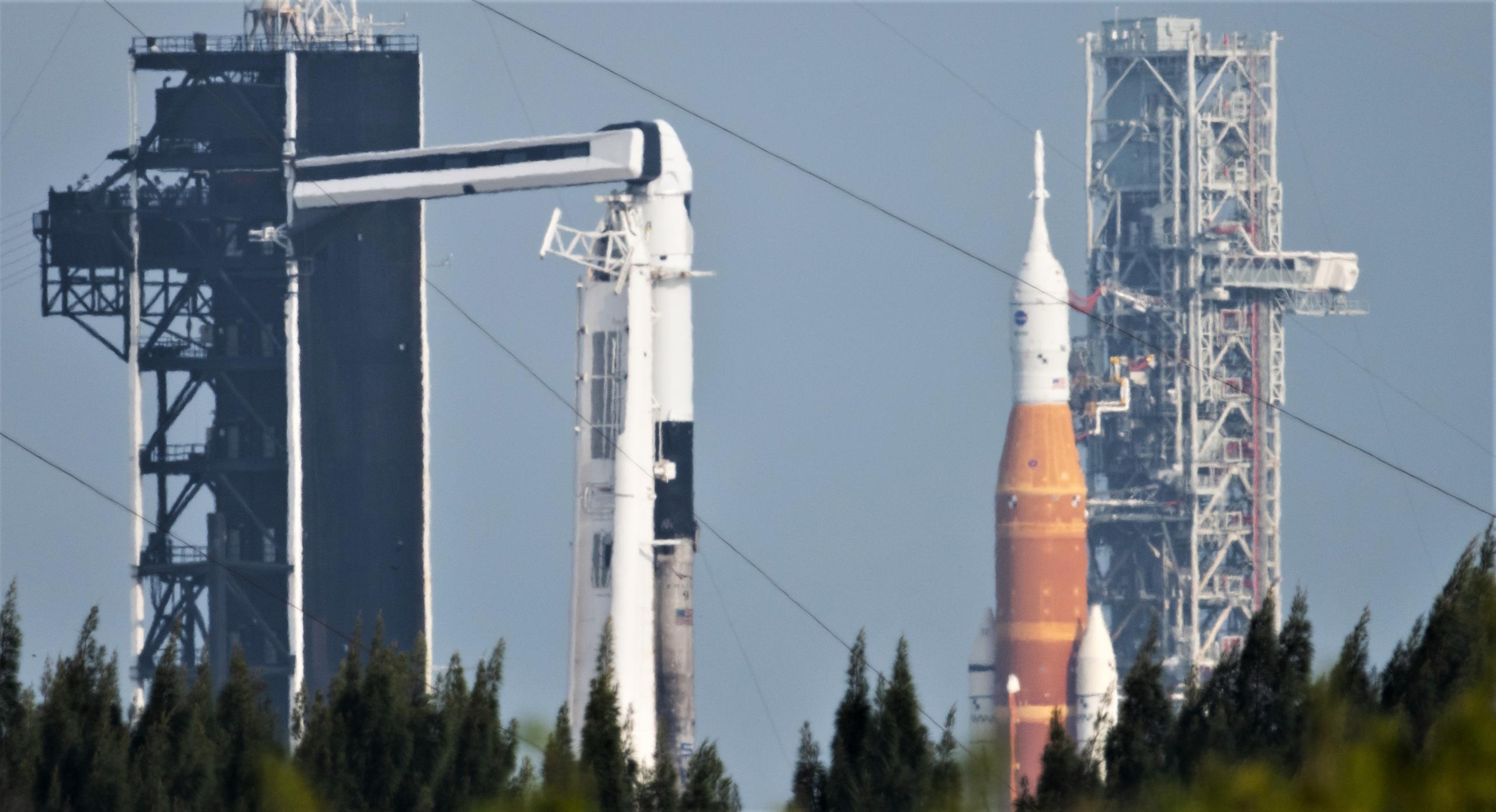
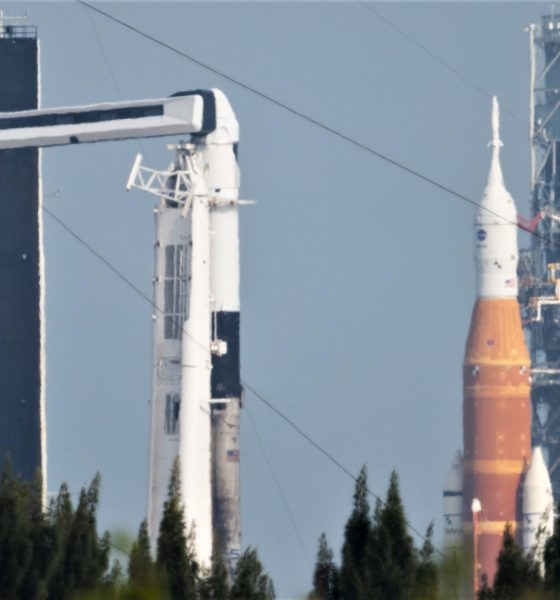
News
SpaceX, NASA targeting separate Moon launches days apart
NASA and a SpaceX customer have announced plans to launch two unrelated Moon missions days apart next month.
On October 12th, NASA confirmed that it will roll its Space Launch System (SLS) rocket out to its Kennedy Space Center LC-39A pad for the fourth time as early as November 4th. Barring surprises, the rocket’s next launch attempt is scheduled no earlier than (NET) 12:07 am EDT (17:07 UTC), November 14th. SLS is tasked with launching an uncrewed prototype of NASA’s Orion crew capsule on its way to the Moon, where the spacecraft will attempt to enter lunar orbit and conduct tests before returning to Earth.
The same day, Japanese startup ispace confirmed that HAKUTO-R M1, its first commercial Moon lander, is scheduled to launch on a SpaceX Falcon 9 rocket sometime between November 9th and 15th. While NASA has a $73M contract with ispace to develop a second-generation SERIES-2 Moon lander in the United States, the first-generation HAKUTO-R program has been an almost entirely private endeavor. The first M1 lander will attempt to deliver two rovers – one built by Japan and the other by the United Arab Emirates – and several other commercial and government payloads to the surface of the Moon.
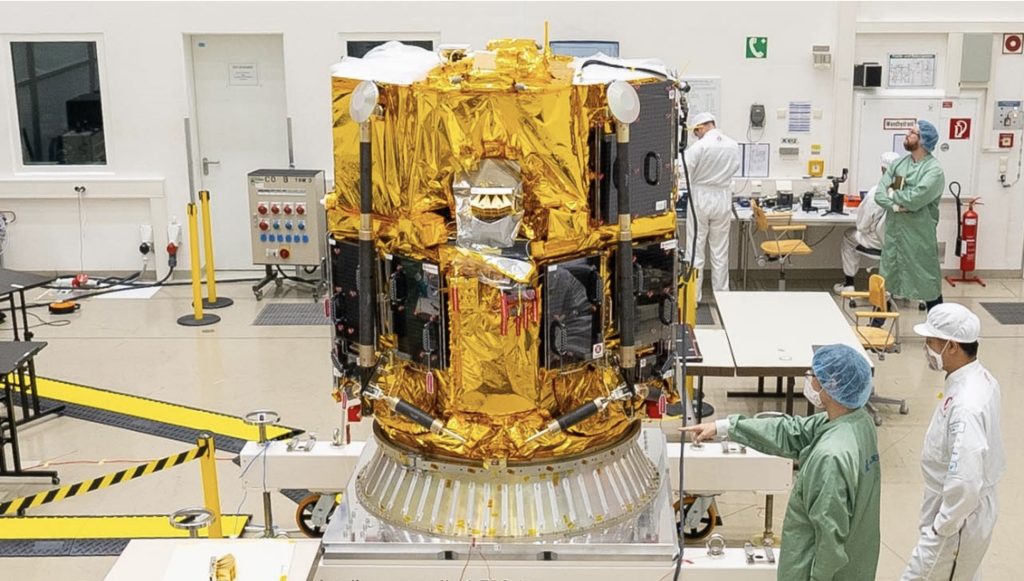
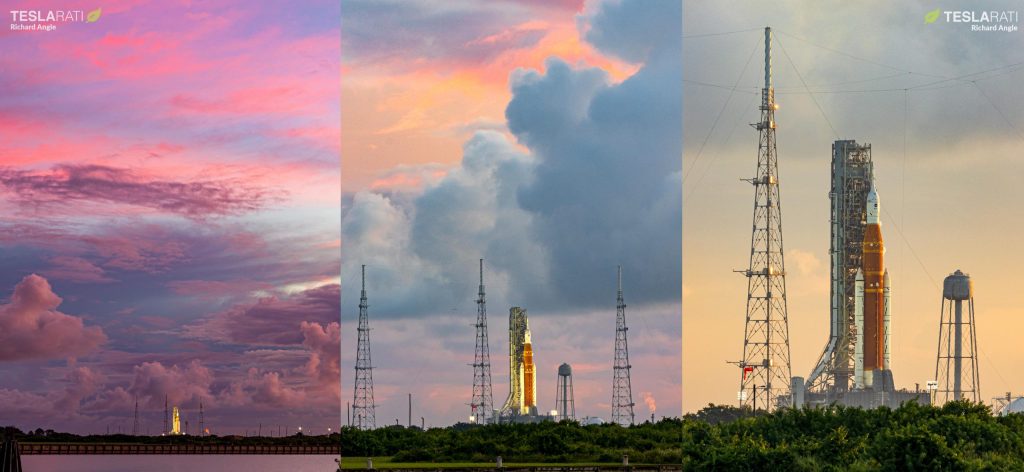
As of 2020, HAKUTO-R is expected to weigh around 1050 kilograms (~2300 lb) at launch and has been designed to land up to 30 kilograms (~66 lb) of usable payload on the Moon. ispace has designed and built most of the lander’s structures but contracted with Europe’s ArianeGroup to provide the propulsion system and fully assemble, integrate, and test the lander in Germany.
According to ispace’s documentation [PDF], Falcon 9 will launch HAKUTO-R into a “supersynchronous” Earth orbit, where the lander will check out its systems before eventually using its own propulsion to thrust itself free of Earth’s gravity well and into the Moon’s. It expects a nominal transit from Earth orbit to the lunar surface to take at least 20 days. The lander is designed to survive up to 12 days on the Moon, during which it will attempt to operate its onboard experiments, deploy both of its tiny rovers, and transmit all the data gathered back to Earth.
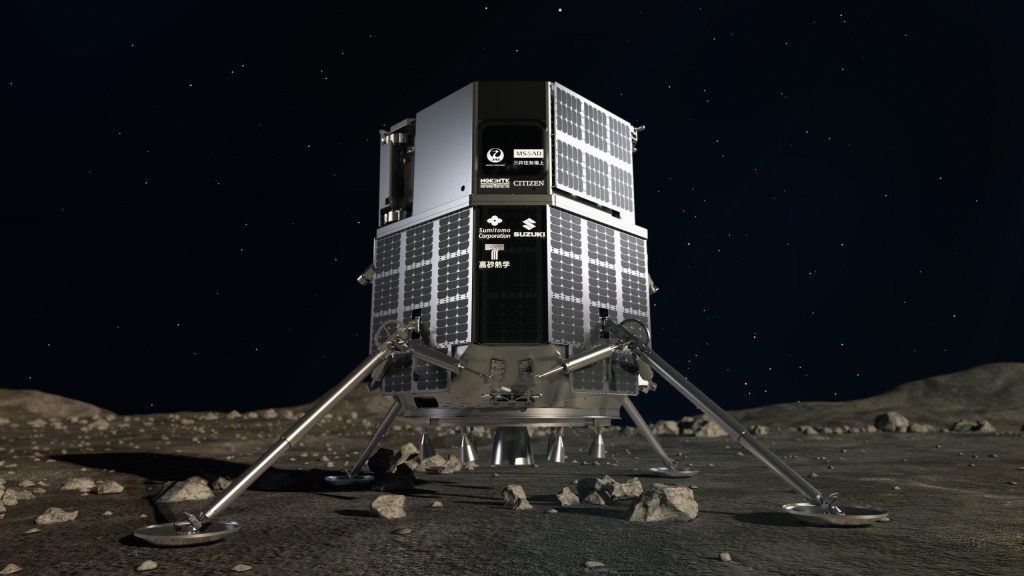
The startup initially [PDF] described its arrangements with SpaceX as contracts to launch two landers as secondary payloads on two Falcon 9 rockets. In its press releases, ispace no longer specifies whether the one-ton spacecraft will be the only payload on Falcon 9. It’s possible that HAKUTO-R M1 will be a secondary payload on SpaceX’s launch of the Eutelsat 10B geostationary communications satellite, which is currently scheduled NET November 11th. In a rare move, SpaceX will reportedly expend Falcon 9’s reusable first-stage booster during the mission, leaving much more performance on the table.
Update: Launch photographer Ben Cooper reports that Falcon 9’s reusable booster will fly back to the Florida coast to land on land after launching HAKUTO-R, strongly implying that the Moon lander will actually be the rocket’s only payload.
ispace has raised approximately $210 million since it was founded in 2010 – coincidentally the same year that the US Congress forced NASA to begin developing the SLS rocket. 12 years later, there’s a chance that the first launches of SLS and HAKUTO-R could occur hours apart.
When it rolls out next month, NASA’s SLS rocket will be heading to the launch pad for the fourth time. SLS and Orion have had a less-than-smooth journey to their first launch, suffering half a decade of delays and running tens of billions of dollars over budget as a result. Once all the pieces had arrived in Florida, it took NASA and its contractors about 12 months to finish assembling SLS and Orion and begin testing the integrated rocket.
Since integrated testing began in April 2022, SLS has undergone five publicized wet dress rehearsal (WDR) tests in April, June, and September. It also attempted to launch twice on August 29th and September 3rd, although both attempts were arguably a continuation of WDR testing in everything but name. But it appears that when the rocket rolls out for the fourth time, NASA will have finally completed nearly all of the testing it should have finished before loudly proclaiming that its “Mega Moon Rocket” was ready to launch back in August.
The SLS launch debut will almost certainly take precedence over any other Cape Canaveral launch around the same time, including HAKUTO-R M1, but SpaceX could potentially launch the Moon lander roughly one day before or after NASA’s Moon rocket.

News
Tesla is not sparing any expense in ensuring the Cybercab is safe
Images shared by the longtime watcher showed 16 Cybercab prototypes parked near Giga Texas’ dedicated crash test facility.

The Tesla Cybercab could very well be the safest taxi on the road when it is released and deployed for public use. This was, at least, hinted at by the intensive safety tests that Tesla seems to be putting the autonomous two-seater through at its Giga Texas crash test facility.
Intensive crash tests
As per recent images from longtime Giga Texas watcher and drone operator Joe Tegtmeyer, Tesla seems to be very busy crash testing Cybercab units. Images shared by the longtime watcher showed 16 Cybercab prototypes parked near Giga Texas’ dedicated crash test facility just before the holidays.
Tegtmeyer’s aerial photos showed the prototypes clustered outside the factory’s testing building. Some uncovered Cybercabs showed notable damage and one even had its airbags engaged. With Cybercab production expected to start in about 130 days, it appears that Tesla is very busy ensuring that its autonomous two-seater ends up becoming the safest taxi on public roads.
Prioritizing safety
With no human driver controls, the Cybercab demands exceptional active and passive safety systems to protect occupants in any scenario. Considering Tesla’s reputation, it is then understandable that the company seems to be sparing no expense in ensuring that the Cybercab is as safe as possible.
Tesla’s focus on safety was recently highlighted when the Cybertruck achieved a Top Safety Pick+ rating from the Insurance Institute for Highway Safety (IIHS). This was a notable victory for the Cybertruck as critics have long claimed that the vehicle will be one of, if not the, most unsafe truck on the road due to its appearance. The vehicle’s Top Safety Pick+ rating, if any, simply proved that Tesla never neglects to make its cars as safe as possible, and that definitely includes the Cybercab.
Elon Musk
Tesla’s Elon Musk gives timeframe for FSD’s release in UAE
Provided that Musk’s timeframe proves accurate, FSD would be able to start saturating the Middle East, starting with the UAE, next year.

Tesla CEO Elon Musk stated on Monday that Full Self-Driving (Supervised) could launch in the United Arab Emirates (UAE) as soon as January 2026.
Provided that Musk’s timeframe proves accurate, FSD would be able to start saturating the Middle East, starting with the UAE, next year.
Musk’s estimate
In a post on X, UAE-based political analyst Ahmed Sharif Al Amiri asked Musk when FSD would arrive in the country, quoting an earlier post where the CEO encouraged users to try out FSD for themselves. Musk responded directly to the analyst’s inquiry.
“Hopefully, next month,” Musk wrote. The exchange attracted a lot of attention, with numerous X users sharing their excitement at the idea of FSD being brought to a new country. FSD (Supervised), after all, would likely allow hands-off highway driving, urban navigation, and parking under driver oversight in traffic-heavy cities such as Dubai and Abu Dhabi.
Musk’s comments about FSD’s arrival in the UAE were posted following his visit to the Middle Eastern country. Over the weekend, images were shared online of Musk meeting with UAE Defense Minister, Deputy Prime Minister, and Dubai Crown Prince HH Sheikh Hamdan bin Mohammed. Musk also posted a supportive message about the country, posting “UAE rocks!” on X.
FSD recognition
FSD has been getting quite a lot of support from foreign media outlets. FSD (Supervised) earned high marks from Germany’s largest car magazine, Auto Bild, during a test in Berlin’s challenging urban environment. The demonstration highlighted the system’s ability to handle dense traffic, construction sites, pedestrian crossings, and narrow streets with smooth, confident decision-making.
Journalist Robin Hornig was particularly struck by FSD’s superior perception and tireless attention, stating: “Tesla FSD Supervised sees more than I do. It doesn’t get distracted and never gets tired. I like to think I’m a good driver, but I can’t match this system’s all-around vision. It’s at its best when both work together: my experience and the Tesla’s constant attention.” Only one intervention was needed when the system misread a route, showcasing its maturity while relying on vision-only sensors and over-the-air learning.
News
Tesla quietly flexes FSD’s reliability amid Waymo blackout in San Francisco
“Tesla Robotaxis were unaffected by the SF power outage,” Musk wrote in his post.

Tesla highlighted its Full Self-Driving (Supervised) system’s robustness this week by sharing dashcam footage of a vehicle in FSD navigating pitch-black San Francisco streets during the city’s widespread power outage.
While Waymo’s robotaxis stalled and caused traffic jams, Tesla’s vision-only approach kept operating seamlessly without remote intervention. Elon Musk amplified the clip, highlighting the contrast between the two systems.
Tesla FSD handles total darkness
The @Tesla_AI account posted a video from a Model Y operating on FSD during San Francisco’s blackout. As could be seen in the video, streetlights, traffic signals, and surrounding illumination were completely out, but the vehicle drove confidently and cautiously, just like a proficient human driver.
Musk reposted the clip, adding context to reports of Waymo vehicles struggling in the same conditions. “Tesla Robotaxis were unaffected by the SF power outage,” Musk wrote in his post.
Musk and the Tesla AI team’s posts highlight the idea that FSD operates a lot like any experienced human driver. Since the system does not rely on a variety of sensors and a complicated symphony of factors, vehicles could technically navigate challenging circumstances as they emerge. This definitely seemed to be the case in San Francisco.
Waymo’s blackout struggles
Waymo faced scrutiny after multiple self-driving Jaguar I-PACE taxis stopped functioning during the blackout, blocking lanes, causing traffic jams, and requiring manual retrieval. Videos shared during the power outage showed fleets of Waymo vehicles just stopping in the middle of the road, seemingly confused about what to do when the lights go out.
In a comment, Waymo stated that its vehicles treat nonfunctional signals as four-way stops, but “the sheer scale of the outage led to instances where vehicles remained stationary longer than usual to confirm the state of the affected intersections. This contributed to traffic friction during the height of the congestion.”
A company spokesperson also shared some thoughts about the incidents. “Yesterday’s power outage was a widespread event that caused gridlock across San Francisco, with non-functioning traffic signals and transit disruptions. While the failure of the utility infrastructure was significant, we are committed to ensuring our technology adjusts to traffic flow during such events,” the Waymo spokesperson stated, adding that it is “focused on rapidly integrating the lessons learned from this event, and are committed to earning and maintaining the trust of the communities we serve every day.”








